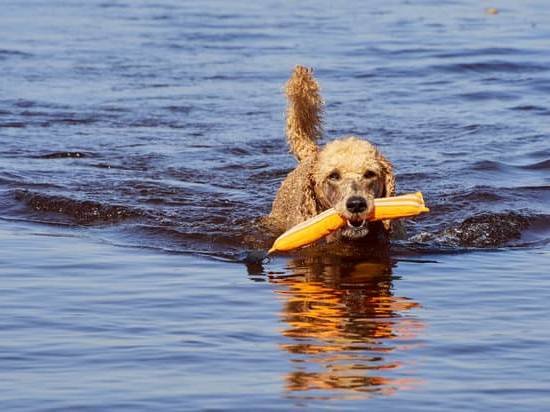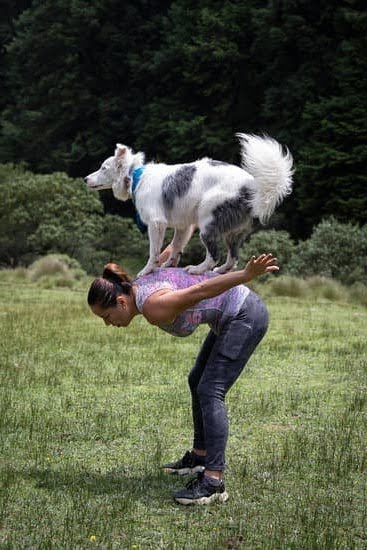Dogs have a natural instinct to chase after small animals, including cats. While this behavior may seem harmless, it can potentially lead to dangerous situations for both the dog and the cat. In this article, we will discuss how to train your dog to stop chasing cats effectively. Understanding the reasons behind this behavior is crucial in order to address it properly.
Training your dog to stop chasing cats is not only about creating a harmonious environment between your pets but also ensuring their safety and well-being. Cats can become stressed, anxious or injured when constantly chased by a dog. It is important for pet owners to take proactive steps in training their dogs to resist the urge to chase after felines.
Before diving into specific training techniques, it is essential to create a safe and controlled environment for training sessions. This includes providing proper equipment, such as leashes and harnesses, as well as choosing an area free of distractions. By setting up the right conditions, you can focus on teaching your dog alternative behaviors that will help them coexist peacefully with cats in the household.
Why It’s Important to Train Your Dog to Stop Chasing Cats
It is vital to train your dog to stop chasing cats for the safety and well-being of both your furry companions. While it may seem like harmless play to your dog, the chase instinct can trigger a predatory response that can result in injury or even death to the cat.
Additionally, constant chasing can cause stress and anxiety for the cat, leading to behavioral issues and a poor quality of life. By training your dog to coexist peacefully with cats, you are not only ensuring their safety but also promoting harmony within your household.
To successfully train your dog to stop chasing cats, it is essential to establish clear boundaries and expectations early on. Consistency is key when implementing training techniques, as mixed signals can confuse your dog and hinder progress.
By setting firm rules and enforcing them consistently, you are teaching your dog that chasing cats is unacceptable behavior. Remember that every interaction between your dog and the cat is a learning opportunity, so make sure to supervise their interactions closely during the training process.
Below are some effective strategies on how to train your dog to stop chasing cats:
- Start with basic obedience training such as “sit,” “stay,” and “leave it” commands.
- Use positive reinforcement techniques like treats or praise when your dog displays calm behavior around the cat.
- Utilize training tools such as leashes, baby gates, or muzzles to control interactions between your dog and the cat.
By implementing these strategies consistently and patiently, you can help your dog overcome their natural instincts and learn to peacefully coexist with feline companions. Remember that each dog is unique, so be patient and adjust your training methods as needed to suit your pet’s individual personality and needs.
Pre-Training Preparations
When embarking on the journey to train your dog to stop chasing cats, it is crucial to set the stage for success by creating a safe training environment. This not only ensures the physical safety of both your dog and the cats but also establishes a conducive setting for effective training sessions.
One of the first steps in this pre-training preparation is to carefully assess your home layout and make necessary adjustments to separate the cat’s living space from areas where your dog has access.
Establish Boundaries
To prevent any unexpected encounters between your dog and the cats, consider utilizing baby gates or pet barriers to create physical boundaries within your home. This allows for controlled interactions between them and minimizes the opportunity for chasing behaviors to occur. Additionally, provide plenty of elevated spaces such as cat trees or shelves where the cats can retreat to safety if needed.
Create Safe Spaces
Designate specific areas in your home where each pet can have their own space without feeling threatened or intimidated. This could include providing separate feeding stations, litter boxes, and comfortable resting spots for both the dog and cats. By respecting their individual territories, you are promoting a sense of security and reducing potential triggers for chasing behavior.
Schedule Supervised Interactions
Gradually introduce controlled interactions between your dog and the cats under close supervision. Start with short sessions where both pets are calm and relaxed, offering treats and praise for positive behavior. Keep a watchful eye on their body language and intervene immediately if signs of tension or aggression start to arise. Consistent monitoring during these initial introductions sets the foundation for successful training on how to train dog to stop chasing cats.
Basic Obedience Training Techniques to Start With
When it comes to training your dog to stop chasing cats, having a strong foundation in basic obedience commands is essential. Commands such as “sit,” “stay,” “come,” and “leave it” are crucial in redirecting your dog’s attention away from the urge to chase. By practicing these commands regularly, you can establish control over your dog’s behavior and teach them to listen to you even when they are tempted to chase.
One effective technique is the “leave it” command, which can be particularly useful when your dog shows interest in a cat. Start by placing a treat on the ground and covering it with your hand. When your dog tries to go for the treat, say “leave it” firmly and wait for them to back off.
As soon as they do, reward them with a different treat and praise. Repeat this exercise multiple times until your dog learns to ignore objects or animals they are fixated on.
Consistency is key when implementing obedience training techniques with your dog. Make sure to practice these commands regularly in different environments and situations to reinforce their learning. Remember, patience and positive reinforcement are crucial in teaching your dog how to behave appropriately around cats. With dedication and consistent training, you can help your furry friend overcome their natural instinct to chase cats and foster a peaceful coexistence between them.
Understanding Your Dog’s Body Language and Behavior Cues
Recognizing Signs of Aggression
One of the key components in training a dog to stop chasing cats is recognizing and understanding their body language and behavior cues. Dogs often exhibit signs of aggression or excitement when they see a cat, such as stiffening their body, barking, lunging forward, or fixating their gaze on the cat. By learning to recognize these signs early on, you can intervene before your dog escalates to chasing behavior.
Body Language Cues to Look For
When your dog is about to chase a cat, they may exhibit specific body language cues that indicate their intentions. These can include raised hackles, a tense body posture, dilated pupils, and a focused gaze. It’s crucial to pay attention to these subtle signals so you can redirect your dog’s attention and prevent them from chasing the cat.
Redirecting Your Dog’s Focus
To prevent your dog from chasing cats, it’s important to redirect their focus in a positive way. When you notice your dog exhibiting signs of wanting to chase a cat, immediately call their name and ask them to perform a basic obedience command like “sit” or “stay.” This redirects their attention away from the cat and onto you, reinforcing good behavior and helping them understand that ignoring the cat leads to positive reinforcement.
By understanding your dog’s body language and behavior cues when it comes to chasing cats, you’ll be better equipped to intervene effectively and train them not to engage in this behavior. Consistent training using positive reinforcement techniques will help strengthen your bond with your furry friend while creating a harmonious environment for both your dog and any feline companions.
Training Tools and Equipment to Aid in Stopping the Chasing Behavior
Dogs have a natural instinct to chase small animals like cats due to their predatory nature. However, this behavior can be problematic, especially if you have a cat as a pet in your household. Training your dog to stop chasing cats is essential not only for the safety of the cats but also for creating a harmonious environment at home. Using the right tools and equipment can significantly aid in addressing and modifying this behavior.
One effective tool that can assist in training your dog to stop chasing cats is a head halter or harness. These tools are designed to give you more control over your dog’s movements, making it easier to redirect their attention when they show signs of wanting to chase a cat. Additionally, head halters can help prevent your dog from lunging forward, giving you the opportunity to intervene and correct their behavior.
Another useful piece of equipment is a sturdy leash along with a well-fitted collar or harness. When training your dog to stop chasing cats, using a leash allows you to maintain physical control over them during training sessions or when introducing them to the presence of a cat.
This way, you can guide their movements and prevent them from engaging in the undesired behavior. It’s essential to choose the right leash length based on your dog’s size and strength for better handling and control.
Moreover, utilizing interactive toys or puzzles can help redirect your dog’s focus away from chasing cats by providing mental stimulation and engagement. Engaging your dog in play with these toys not only helps keep them mentally stimulated but also reinforces positive behaviors that do not involve chasing cats. Incorporating such interactive activities into your training sessions can make the learning process more enjoyable for your dog while promoting healthier interactions with other pets in the household.
| Training Tools | Description |
|---|---|
| Head Halter/Harness | Provides more control over dog’s movements and helps in redirecting their attention. |
| Leash & Collar/Harness | Aids in maintaining physical control over the dog during training sessions or interactions with cats. |
| Interactive Toys/Puzzles | Redirects focus away from chasing by providing mental stimulation and reinforcing positive behaviors. |
Strategies for Desensitizing Your Dog to Cats
Dogs, by nature, have a prey drive that can sometimes lead them to chase smaller animals such as cats. It is essential for pet owners to train their dogs to stop chasing cats not only for the safety of the feline friends but also for a harmonious coexistence in the household. Understanding how to train a dog to stop chasing cats involves desensitizing them through gradual exposure and positive reinforcement techniques.
Here are some effective strategies for desensitizing your dog to cats:
- Controlled introductions: Start by keeping your dog on a leash and introducing them to a calm and confident cat in a controlled environment. Ensure that both animals are at ease and maintain a safe distance initially.
- Positive associations: Use treats and praise to reward your dog for calm behavior around the cat. This will help create positive associations with the presence of the feline companion.
- Gradual exposure: Slowly increase the amount of time your dog spends around the cat while closely monitoring their reactions. If any signs of arousal or aggression appear, redirect their attention and focus on calming exercises.
Desensitizing your dog to cats requires patience, consistency, and understanding of each animal’s behavior cues. By using these strategies and gradually exposing your dog to cats in a controlled setting, you can help them learn to coexist peacefully with their feline counterparts.
Remember that every dog is unique, so it may take time and repetition before they fully stop chasing cats. With dedication and positive reinforcement, you can successfully train your dog to respect and live harmoniously with cats in your home.
Positive Reinforcement Methods for Successful Training
When it comes to training your dog to stop chasing cats, positive reinforcement can be a powerful tool. By rewarding desired behaviors, you are encouraging your dog to repeat those behaviors in the future. Positive reinforcement could involve giving treats, verbal praise, or even toys as rewards when your dog shows good behavior around cats. This method helps to create a strong association between positive outcomes and obeying commands.
One effective technique is clicker training, where a clicking sound is used to signal to the dog that they have performed the desired behavior correctly. This clear and consistent form of communication can help reinforce the idea of what behavior is being rewarded. In addition to clicker training, using a specific command like “leave it” can also be helpful in redirecting your dog’s attention away from chasing the cat towards you.
Consistency is key when employing positive reinforcement methods. Make sure that everyone in the household is on the same page regarding training techniques and rewards. It’s important to reward your dog every time they display the desired behavior initially, gradually fading out treats over time as they become more reliable in their responses. Remember, patience and consistency will go a long way in successfully training your dog to stop chasing cats.
| Positive Reinforcement Methods | Description |
|---|---|
| Clicker Training | Using a clicking sound to signal correct behavior |
| Specific Commands | Teaching commands like “leave it” for redirection |
| Consistency | Rewarding every desired behavior initially with gradual fading out of treats |
Troubleshooting Common Challenges in Training a Dog to Stop Chasing Cats
Training your dog to stop chasing cats can be a challenging endeavor, as it goes against their natural instincts. However, with dedication and patience, it is possible to teach your furry friend to coexist peacefully with feline companions. One of the common challenges many dog owners face during this training process is the persistence of the chasing behavior despite repetitive training sessions. In such cases, it is important to evaluate the effectiveness of your training methods and make necessary adjustments.
If your dog continues to chase cats despite your efforts, it may be helpful to seek guidance from a professional dog trainer or behaviorist. They can provide valuable insights into your dog’s behavior and recommend custom-tailored strategies to address the issue effectively. Additionally, consulting with a veterinarian can help rule out any underlying medical conditions that may be contributing to your dog’s behavior.
Another common challenge in training a dog to stop chasing cats is consistency in enforcing boundaries and rules. It is crucial to establish clear expectations for your dog and consistently reinforce them through positive reinforcement techniques. Remember that patience is key in this process, as changing ingrained behaviors takes time and effort. By staying committed to the training regimen and seeking expert advice when needed, you can successfully teach your dog to coexist peacefully with cats in the household.
Overall, troubleshooting common challenges in training a dog to stop chasing cats requires dedication, patience, and a willingness to adapt your approach as needed. By identifying potential obstacles early on and addressing them proactively, you can set your furry companion up for success in learning new behaviors. With consistent training and positive reinforcement methods, you can create a harmonious environment where both dogs and cats can thrive together peacefully.
Conclusion
In conclusion, successfully training your dog to stop chasing cats is a rewarding journey that requires patience, consistency, and dedication. Understanding the natural instinct of dogs to chase cats is the first step in addressing this behavior effectively. By recognizing the importance of training your dog to coexist peacefully with cats, you are not only creating a harmonious environment at home but also ensuring the safety and well-being of all your pets.
Pre-training preparations such as creating a safe training environment and utilizing basic obedience training techniques are essential in laying the groundwork for successful training outcomes. It is crucial to pay close attention to your dog’s body language and behavior cues to address any chasing behavior promptly. Additionally, incorporating desensitization strategies and positive reinforcement methods will help reinforce desired behaviors and discourage chasing tendencies.
While challenges may arise during the training process, troubleshooting common issues and remaining patient can lead to significant progress over time. Remember that every small achievement in training your dog to stop chasing cats should be celebrated as a step towards building a strong bond between your pets. By following these steps and techniques on how to train dog to stop chasing cats, you can achieve success in promoting peaceful coexistence between your dog and feline companions.
Frequently Asked Questions
How Do I Stop My Dog From Being Obsessed With Cats?
To stop your dog from being obsessed with cats, it’s important to provide proper training and socialization. Redirect their attention towards positive behaviors, such as obedience commands or playing with toys. Consistent reinforcement and praise for appropriate behavior will help them focus on something other than the cat.
How Do I Train My Dog to Leave the Cat Alone?
Training your dog to leave the cat alone requires patience and consistency. Utilize positive reinforcement techniques, such as treats or toys, to reward your dog when they ignore the cat. Supervise interactions between the dog and cat closely, intervening if necessary to prevent any chasing or aggressive behavior. With time and practice, your dog will learn to respect boundaries.
How Do You Train a Dog to Tolerate a Cat?
Teaching a dog to tolerate a cat involves gradual exposure in a controlled environment. Start by allowing them to be in the same room but maintain distance between them. Reward calm behavior with treats and praise, gradually decreasing the space between them over time.
Supervise interactions closely and intervene if signs of tension arise. With patience and consistent training, your dog can learn to coexist peacefully with a cat.

Welcome to the blog! I am a professional dog trainer and have been working with dogs for many years. In this blog, I will be discussing various topics related to dog training, including tips, tricks, and advice. I hope you find this information helpful and informative. Thanks for reading!





